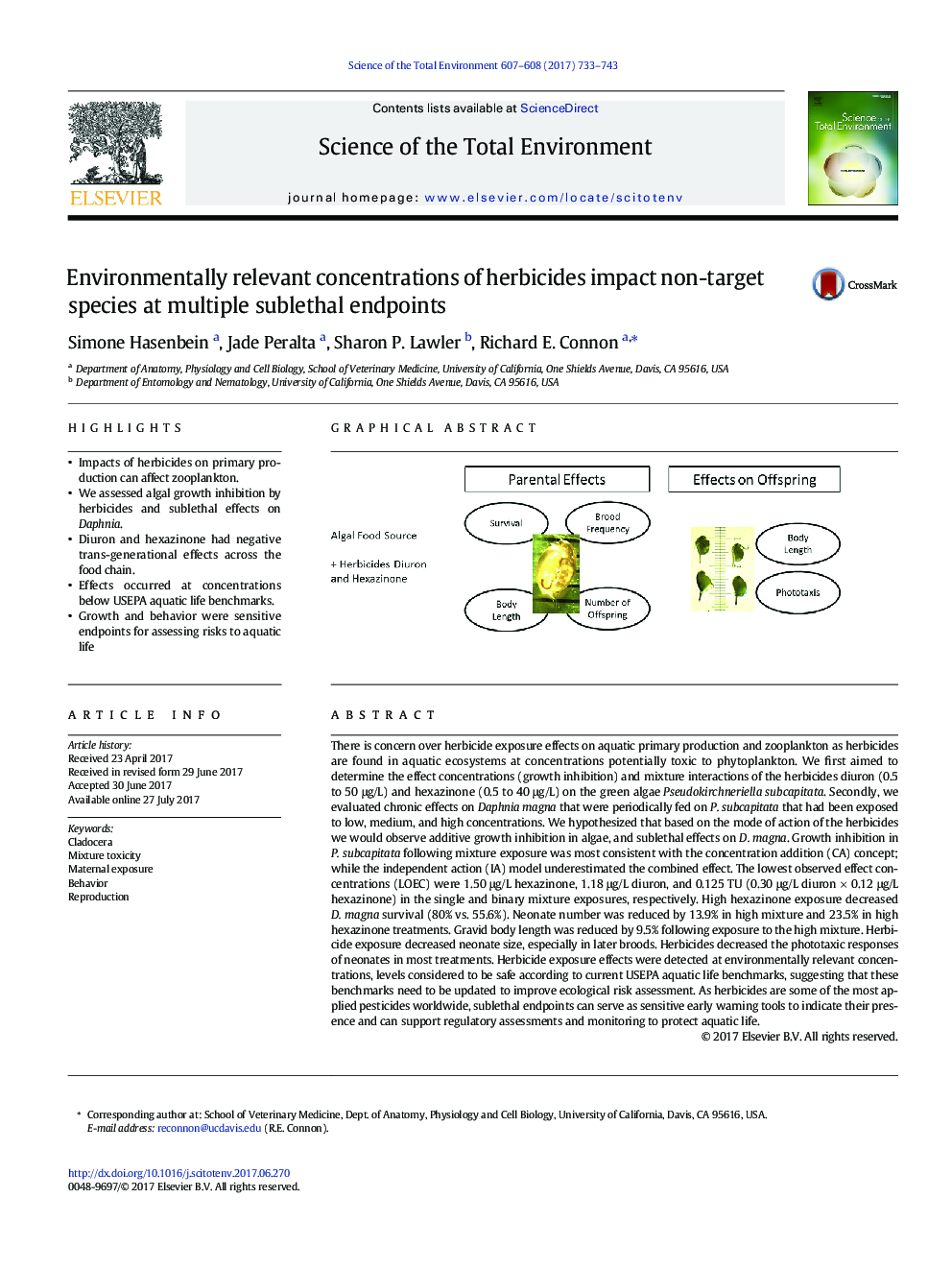| کد مقاله | کد نشریه | سال انتشار | مقاله انگلیسی | نسخه تمام متن |
|---|---|---|---|---|
| 5750030 | 1619694 | 2017 | 11 صفحه PDF | دانلود رایگان |
- Impacts of herbicides on primary production can affect zooplankton.
- We assessed algal growth inhibition by herbicides and sublethal effects on Daphnia.
- Diuron and hexazinone had negative trans-generational effects across the food chain.
- Effects occurred at concentrations below USEPA aquatic life benchmarks.
- Growth and behavior were sensitive endpoints for assessing risks to aquatic life
There is concern over herbicide exposure effects on aquatic primary production and zooplankton as herbicides are found in aquatic ecosystems at concentrations potentially toxic to phytoplankton. We first aimed to determine the effect concentrations (growth inhibition) and mixture interactions of the herbicides diuron (0.5 to 50 μg/L) and hexazinone (0.5 to 40 μg/L) on the green algae Pseudokirchneriella subcapitata. Secondly, we evaluated chronic effects on Daphnia magna that were periodically fed on P. subcapitata that had been exposed to low, medium, and high concentrations. We hypothesized that based on the mode of action of the herbicides we would observe additive growth inhibition in algae, and sublethal effects on D. magna. Growth inhibition in P. subcapitata following mixture exposure was most consistent with the concentration addition (CA) concept; while the independent action (IA) model underestimated the combined effect. The lowest observed effect concentrations (LOEC) were 1.50 μg/L hexazinone, 1.18 μg/L diuron, and 0.125 TU (0.30 μg/L diuron Ã 0.12 μg/L hexazinone) in the single and binary mixture exposures, respectively. High hexazinone exposure decreased D. magna survival (80% vs. 55.6%). Neonate number was reduced by 13.9% in high mixture and 23.5% in high hexazinone treatments. Gravid body length was reduced by 9.5% following exposure to the high mixture. Herbicide exposure decreased neonate size, especially in later broods. Herbicides decreased the phototaxic responses of neonates in most treatments. Herbicide exposure effects were detected at environmentally relevant concentrations, levels considered to be safe according to current USEPA aquatic life benchmarks, suggesting that these benchmarks need to be updated to improve ecological risk assessment. As herbicides are some of the most applied pesticides worldwide, sublethal endpoints can serve as sensitive early warning tools to indicate their presence and can support regulatory assessments and monitoring to protect aquatic life.
92
Journal: Science of The Total Environment - Volumes 607â608, 31 December 2017, Pages 733-743
